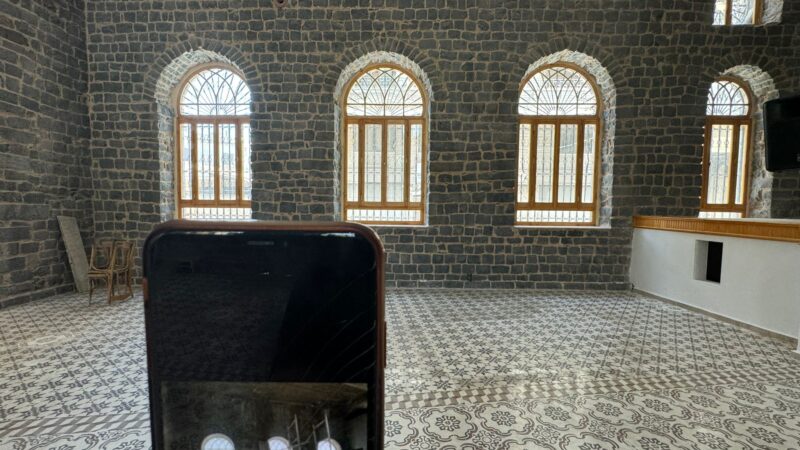
Wales and Zanzibar in twinning partnership
Dewi Davies from the National Trust Llŷn Peninsula, Ceri Williams from National Trust Penrhyn Castle, and Hoshil Dhanji and Makame Juma from Zanzibar Stone Town Heritage Society share reflections from their new INTO twinning partnership.
Dewi Davies, Project Manager for the Llŷn Peninsula, National Trust (EWNI)
Like many sites along this stretch of coastline, the beautiful and very popular harbour village of Porthdinllaen is under threat from the impacts of a changing climate. Here, though, it is not only the rising of sea level coupled with storms of increasing frequency and ferocity, but also a more ‘landward’ issue (landslides and slope failure, exacerbated by increasingly frequent and intense rainfall events) that threatens the village.
Over several years we have been working with partners to bolster the village’s resilience against high tides and storms – including installing tidal flood boards and increasing the height of the sea walls along the front – so that when (not if) the sea threatens to inundate, properties here will have a fighting chance of defending themselves. The cliffs behind have also been given an engineering makeover drained and pinned so that when heavy rain falls, the risk of slope failure is greatly reduced.
The coastal settlements of Stone Town, Zanzibar and Porthdinllaen, Cymru have always faced the challenges of their inherently vulnerable locations head on, only now the need to adapt is greater, and the time we have to do so is ebbing away with each tide.
But there are always benefits to looking beyond your own horizon, and this twinning partnership has meant that our teams here in North Wales have been able to share experiences and learning with our friends in Zanzibar, providing a mutually beneficial way of working together on climate change solutions.
Ceri Williams, General Manager at Penrhyn Castle, National Trust
Penrhyn Castle is an early nineteenth-century folly castle built on the hillside just outside of Bangor in North Wales. It is within striking distance of both the mountains of Eryri and the Menai Straits. This location means we are susceptible – as are all coastal areas – to the impacts of climate change.
This twinning opportunity with the Zanzibar team will give us at Penrhyn huge opportunities for learning and for reviewing our own plans. For several years we have been working towards addressing the impacts of climate change on the castle; in particular, the higher levels of water we are seeing on site and the effects of storms.
The work that the Zanzibar Stone Town Heritage Society have done with their communities in upskilling people with traditional heritage skills is of particular interest. As Penrhyn Castle is part of the Slate Landscapes of North Wales, a UNESCO World Heritage Site since 2021, I feel we can learn a lot from our partners in harnessing the passion and interest of our local communities whilst ensuring we are embedding the necessary skills in the local area to preserve these globally significant parts of the world.
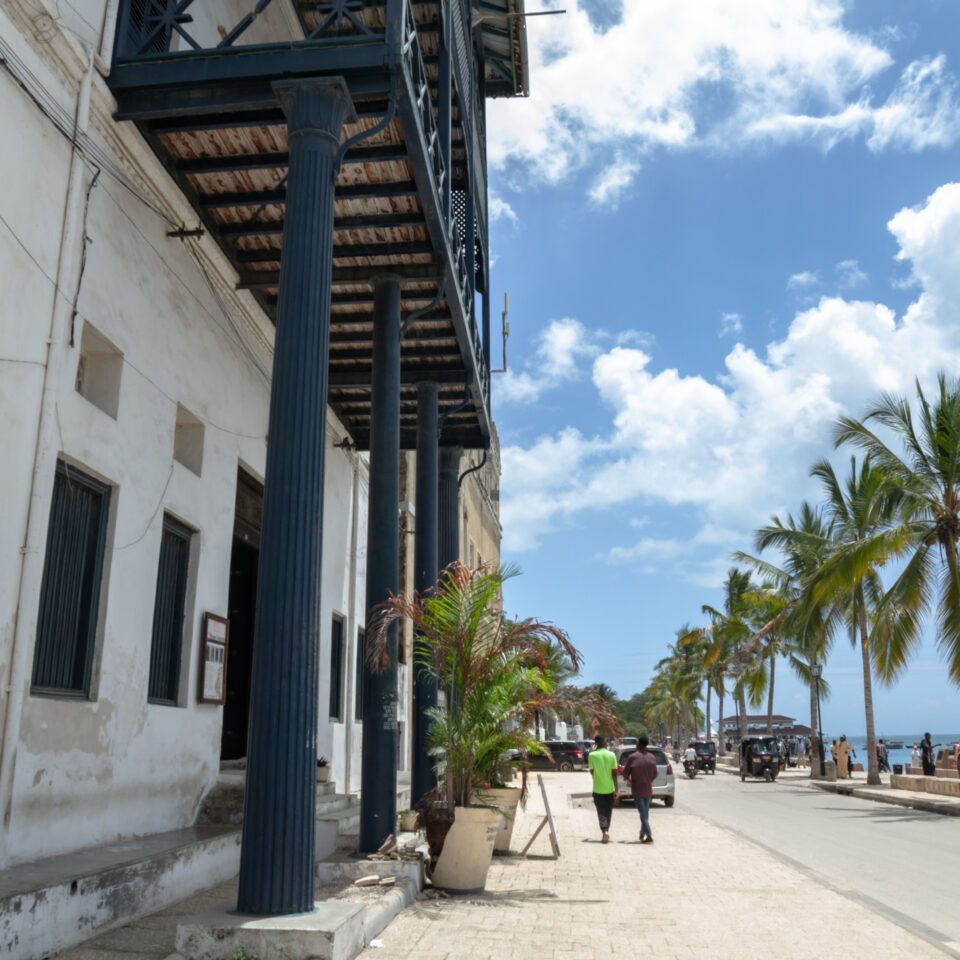
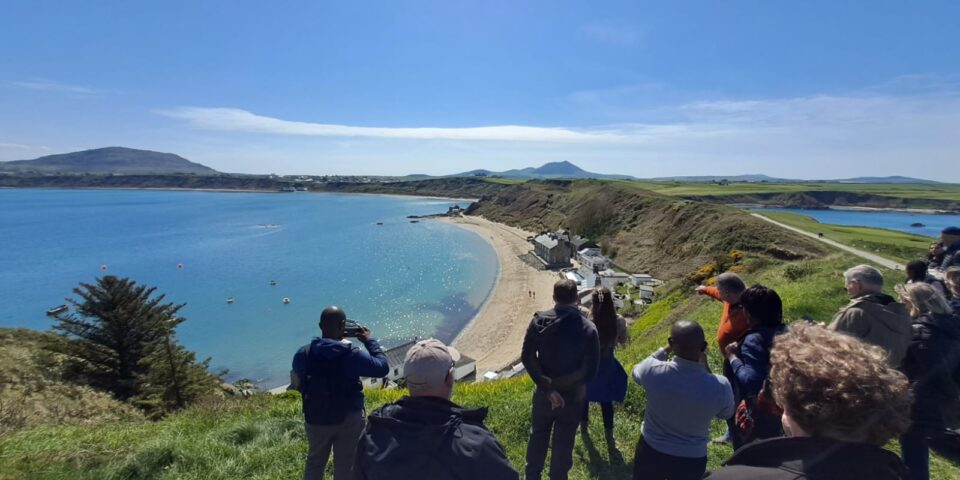
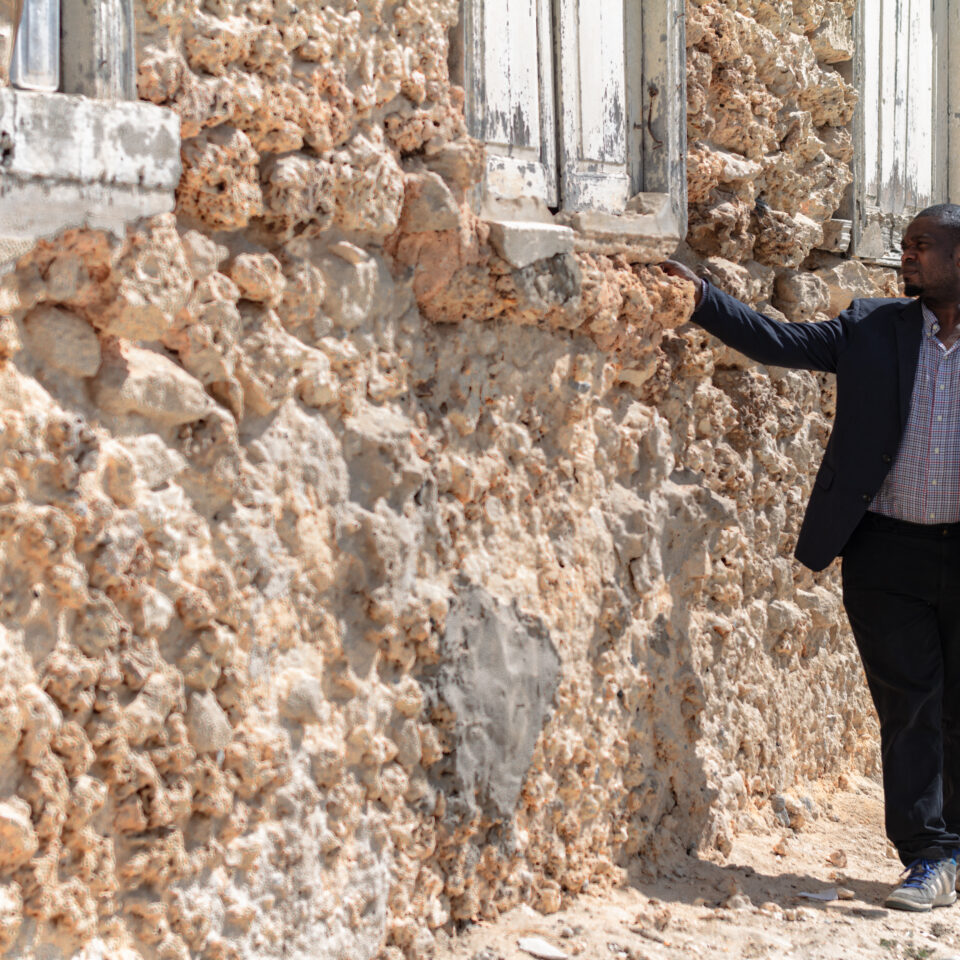
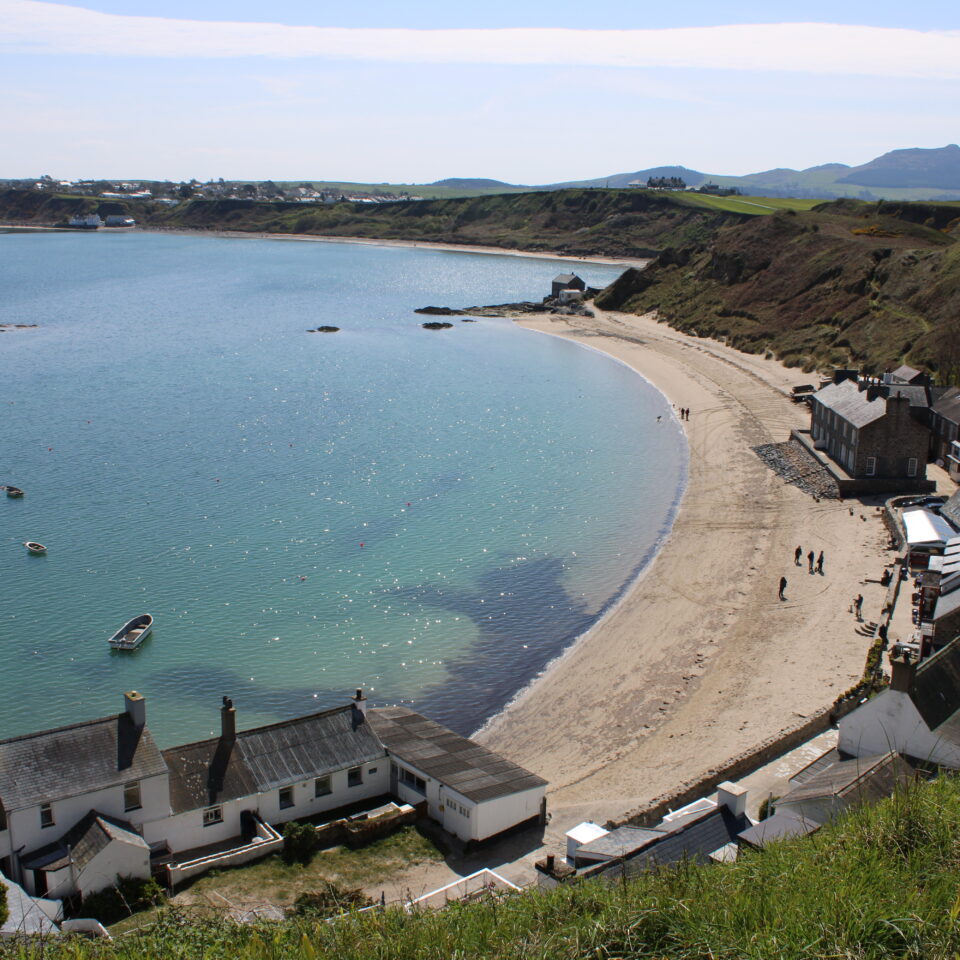
Hoshil Dhanji and Makame Juma of Zanzibar Stone Town Heritage Society
The Stone Town of Zanzibar is an outstanding example of a Swahili trading town, with Arab, Indian and European influences visible in the eighteenth and nineteenth-century buildings, including The Old Customs House, our organisation’s base and the site we’re focusing on as part of the ‘Withstanding Change’ project.
Listed as a UNESCO World Heritage site in 2000, Stone Town is at significant risk from sea level rise as well as more frequent tropical cyclones, pluvial flooding, and coastal erosion.
Located on the Mizingani seafront, The Old Customs House is constantly exposed to increasing humidity and sea salt spray, which deteriorates its external lime-based render and limewash. We’re also seeing increased salt corrosion to metallic building elements, including the corrugated iron roof.
Frequent pluvial floods saturate the foundations, accelerating the capillary rise of moisture-borne salts which evaporate and force the salt particles to the surface of plasters, renders and washes. This causes spalling, flaking and peeling. Increased out-of-season rainfall is preventing the walls from drying out and leading to growth of algae, as well as deterioration of timber elements in the building.
The twinning arrangement between ZSTHS and the National Trust’s sites from North Wales will strengthen the climate adaptations of these sites in Zanzibar and United Kingdom. We’re learning together through networking, data and information sharing, experience sharing, working with diverse communities, and jointly developing new approaches on climate change adaptation and resilience measures using traditional and advanced methodologies.
Keep an eye on INTO’s social media channels (@intoheritage) for updates as the project progresses.

